ChatGPT is often seen as a tool that will replace human labor for tasks such as writing student or professional content. But ChatGPT can also be used to assist this human work, and search is a great example.
Whether it’s research for school or market research for your job, initiating the process of seeking information and finding the right sources can be challenging and time-consuming.
ChatGPT and other AI chatbots can help by reducing the time spent finding sources, allowing you to move more quickly to actually reading and researching your work.
Choosing the right chatbot
Before you begin, it is important to understand the limitations of using ChatGPT. As ChatGPT is not connected to the Internet, it will not be able to give you access to information or resources after 2021, nor will it be able to provide you with a direct link to the source of the information.
The ability to ask a chatbot to provide you with links on the topic you are interested in is very valuable. If you want to do this, I recommend using an internet-connected chatbot, such as Bing Chat, Claude, ChatGPT Plus or Perplexity.
This how-to guide uses ChatGPT as an example of using prompts, but the principles are the same regardless of which chatbot you choose.

Screenshot by Sabrina Ortiz/ZDNET
The brainstorming stage
When you are assigned a research assignment, you often have to draw from the general topic a particular aspect or an exact angle to cover in more depth. ChatGPT can help you with the brainstorming process by suggesting ideas or even modifying your own.
For this research paper example, I will use the general topic “Important technological inventions that caused decisive changes in history.” If I didn’t have a specific idea to write about, I would tell ChatGPT the general theme of the work in as much detail as possible and ask them to make suggestions.
My request (“prompt” given to the chatbot): I have to write a research paper on “Major technological inventions that brought about decisive changes in history”. It must be ten pages long and rely on five different primary sources. Can you help me find a specific topic?
As shown in the screenshot (below), ChatGPT produced 10 viable topics, including “Print Media and the Dissemination of Knowledge”, “Internet and the Digital Age”, “The Telegraph and the Communication Revolution”. communication”, and many others.
You can then follow up with ChatGPT to request additional information. You can even change these topics to an angle that you like more, and continue the feedback loop until you have a topic that suits you.
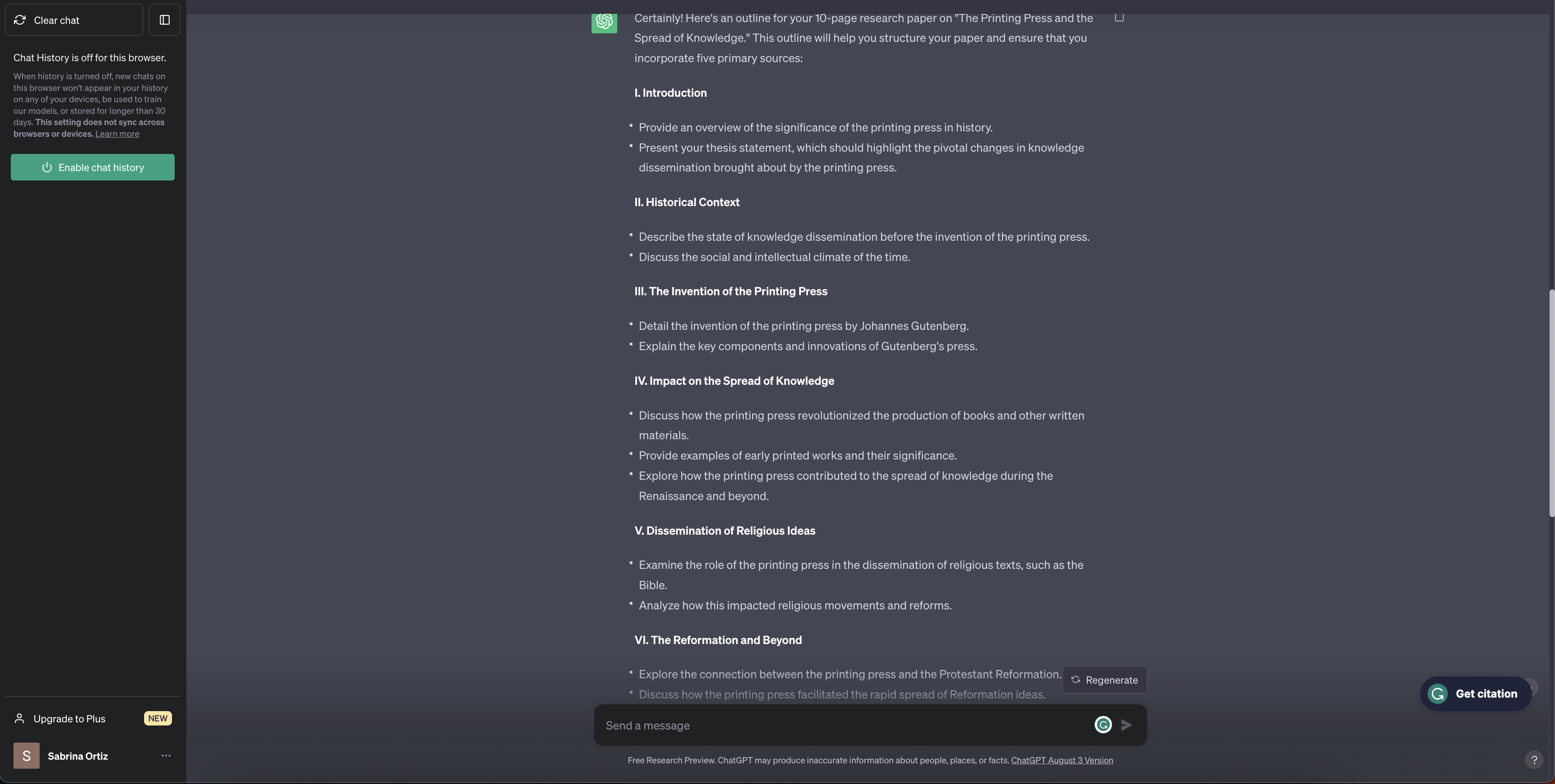
Screenshot by Sabrina Ortiz/ZDNET
Generate a plan
Once you’ve selected an angle, you can ask ChatGPT to generate a shot, including as much detail as possible. For this example, I used the first topic suggested by ChatGPT in the previous step.
My request: Can you give me the outline of a ten-page research paper which must use five primary sources on the subject “Printing and the diffusion of knowledge”?
ChatGPT generated a 13-point plan that carefully outlined the areas I needed to address in my document, as shown in the screenshot (above). You can then use this outline to structure your text and use the bullet points to find sources, using ChatGPT as shown below.
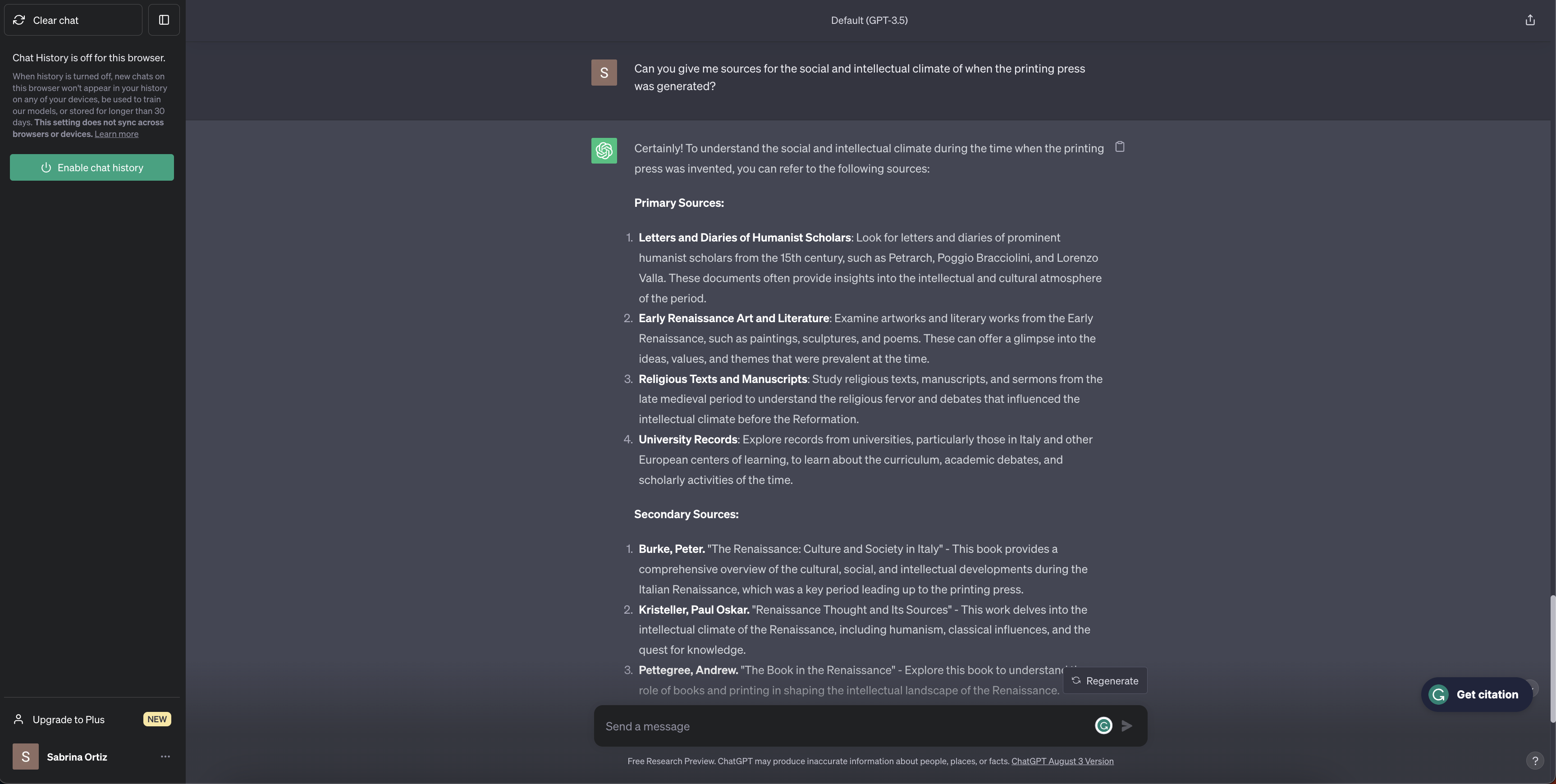
Screenshot by Sabrina Ortiz/ZDNET
Tell ChatGPT your topic and ask for sources
Now that you have established a topic and an outline, you can query ChatGPT about your project topic and ask it to provide you with sources.
My request: Can you give me sources for a ten-page article on this subject, “The written press and the dissemination of knowledge”?
ChatGPT provides a list of five primary and five secondary sources that you can include in your article. Remember that ChatGPT cannot give you web links, so you will have to search for the specific resources on your own, whether using Google or going to your school library.
When I asked Bing Chat the same question, it provided me with sources with clickable links that you can use to get to the material you need more quickly. This is why I would use Bing Chat for this step.
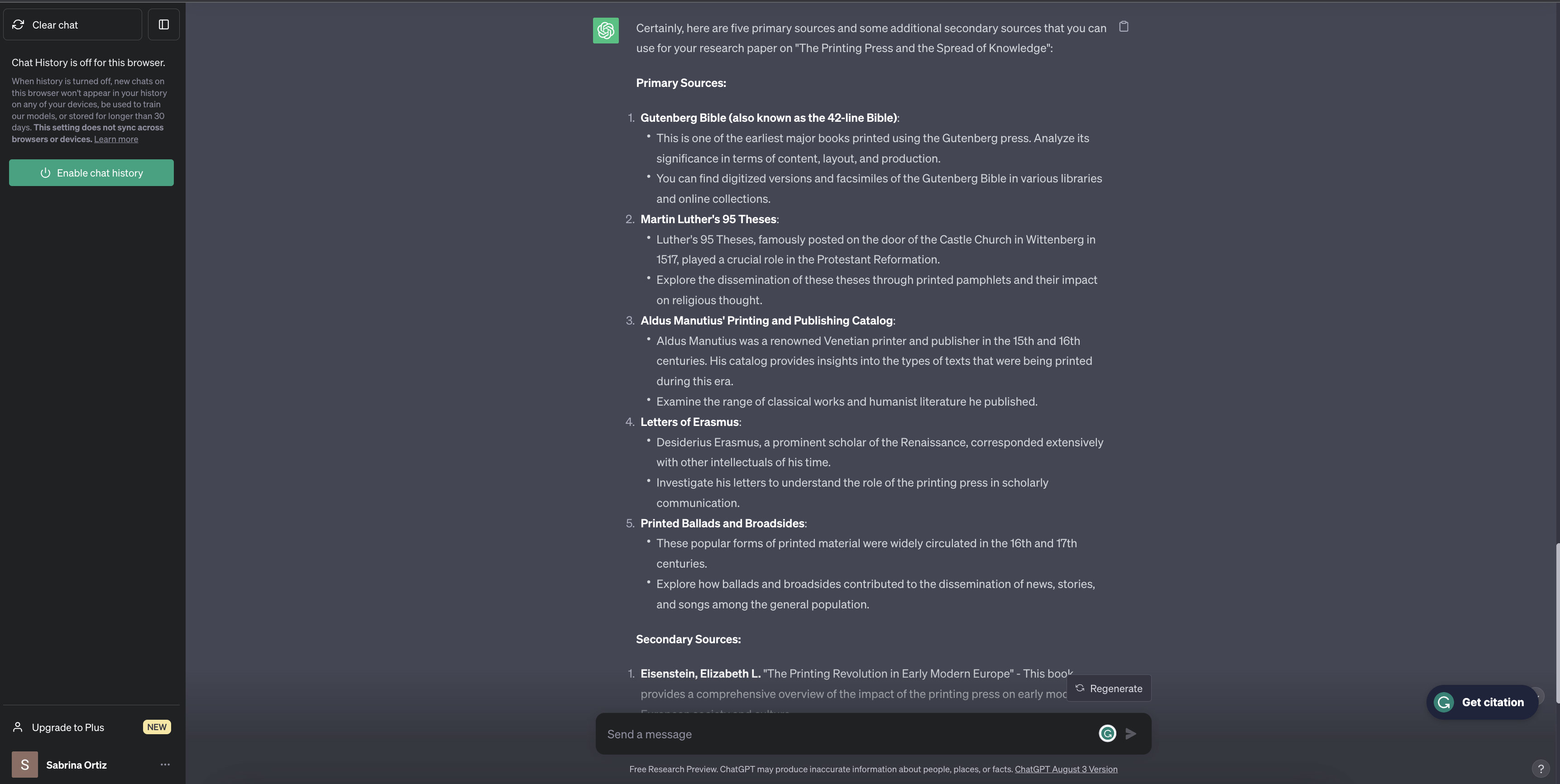
Screenshot by Sabrina Ortiz/ZDNET
Describe a specific idea and ask for sources
Instead of describing the entire topic, you can also use a chatbot to find sources on a specific aspect of your article.
For example, I asked ChatGPT for sources for a specific point in the article outline it generated above.
My request: Can you give me sources on the social and intellectual climate of the time when printing was created?
As in the previous example, ChatGPT generated five primary and five secondary resources for the topic.
Using this feature for smaller parts of your essay is a good alternative because it gives you more options on sources and provides you with personalized information that you can use to carefully write your paper.
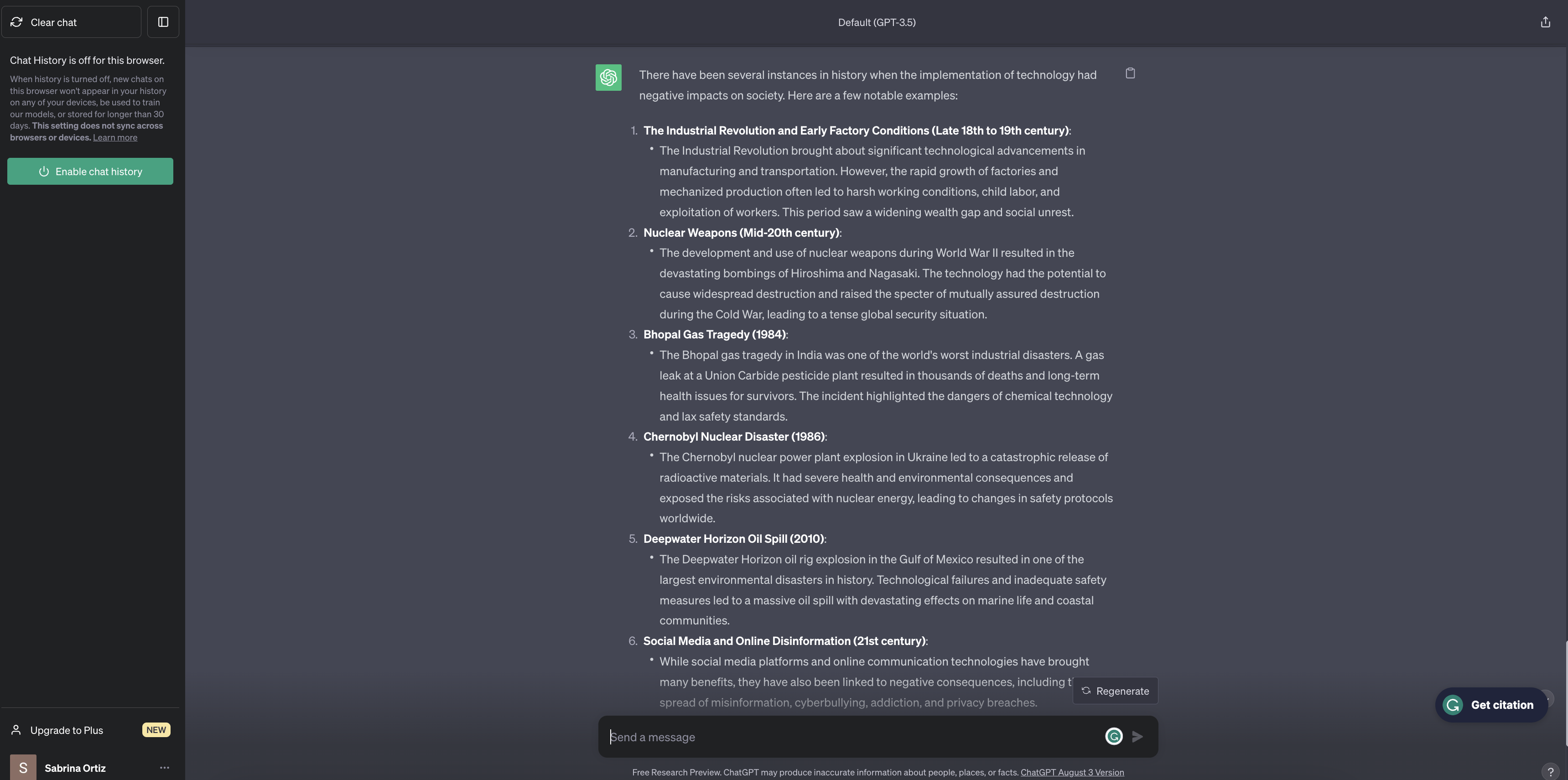
Screenshot by Sabrina Ortiz/ZDNET
Ask for examples of specific consequences
I often use this question in my work, because I sometimes remember a particular incident, but without being able to specify its nature or date.
This tool can also be used when you need to find a specific example to support your topic.
In either case, you can ask ChatGPT to help you identify a specific event or time period, and incorporate those details into your article.
In our example essay, if I wanted to include a rebuttal and delineate a time when technology implementation had negative impacts, but I couldn’t find them, then I could ask ChatGPT to m help identify one.
My query: When is the point in history when the use of technology backfired on society and had negative consequences?
Within seconds, ChatGPT generated 10 examples of adverse impacts that I was able to incorporate into the research as a rebuttal.
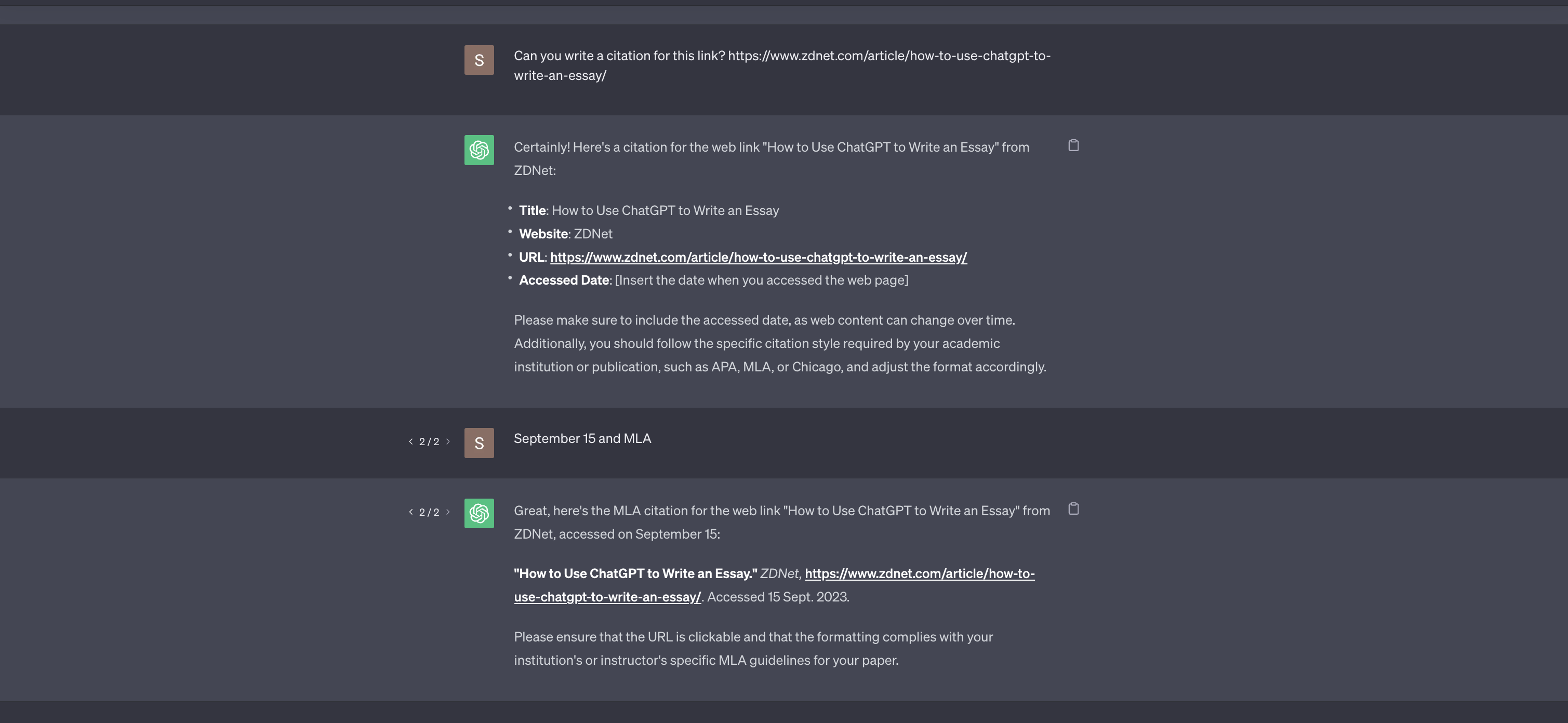
Screenshot by Sabrina Ortiz/ZDNET
Generate quotes
Creating a page of the works you cited, while valuable and necessary for integrity, is a chore. Now you can ask ChatGPT to generate citations for you by simply providing the link or title of the work and respecting the academic style (e.g. MLA) requested for your text.
Source: “ZDNet.com”
